If you’ve ever read our blog, you might be familiar with some of the big rail infrastructure stats—say, for example, the length of the North American rail network (nearly 140,000 track miles) or the total number of freight railroads across the U.S. (632). Maybe your favorite rail infrastructure fact is that each train takes hundreds of trucks off the road.
We wanted to help celebrate Infrastructure Week 2021 (May 10-14) by zeroing in on freight rail projects and facilities that demonstrate the broad impacts – economic development and beyond—of freight rail across the country. To do that, we each identified one of our favorite rail infrastructure stories.
Christy Sammon: The Mason Mega Rail Terminal
Savannah, Georgia
The Georgia Ports Authority (GPA) broke ground on the Mason Mega Rail Terminal at the Port of Savannah in March 2018 to double the port’s lift capacity and open it to new markets. The $127 million project—now over 75% complete—has increased the port’s working tracks, added miles of new rail to enable 10,000-ft trains, implemented rail mounted gantry cranes and added two new rail bridges.
When fully complete in 2022, the terminal will be able to build and receive six 10,000-foot trains simultaneously. These improvements, plus access to Class I railroads Norfolk Southern and CSX, more efficiently and reliably link Savannah to markets in Dallas, Memphis, St. Louis, Chicago and the Ohio Valley. The project has also helped meet increased demand at the port, which handled an all-time record of container units in March.
Per GPA Executive Director Griff Lynch, “The progress we have already made on the Mason Mega Rail has delivered significant capacity increases, and will further assure Savannah’s role as the third busiest container gateway in the nation.”
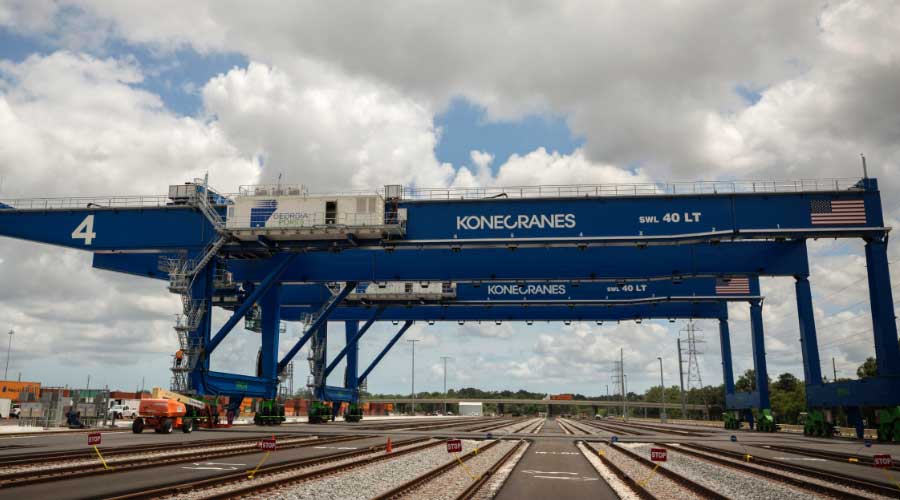
Nate Kaplan: Port of Oakland’s Tall Cranes
Oakland, California
The Port of Oakland, the eighth-busiest container port in the U.S., recently unveiled several new tools to augment its intermodal operations—the tallest cranes in North America. The three massive, 1,600-ton cranes will help serve the port’s two intermodal rail facilities, which are connected by Union Pacific and BNSF to half of the U.S. population. The reliability and efficiency of freight rail is important to the success of the port, which supports over 84,000 jobs in the Bay Area.
Like the trains they’re supporting, the new cranes are environmentally friendly—emitting zero local emissions because they’re powered by electricity. Rail is a key element of the California Sustainable Freight Action Plan, which calls for the increased use of on-dock rail to eliminate truck trips. After all, trains emit 75% fewer GHG emissions than trucks and just one train can take hundreds of trucks off the road.
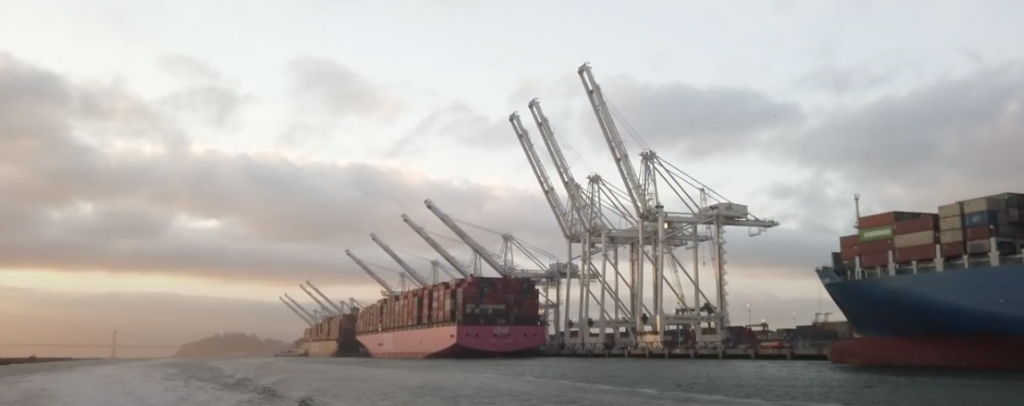
Michael Gaynor: Marion Industrial Center
Marion, Ohio
Originally constructed by the federal government as an Army Engineering Depot in support of World War II operations, Marion Industrial Center (MIC) today is a thriving intermodal facility in north-central Ohio serving domestic and international customers. It’s home to hundreds of jobs and hosts operations for 50 companies, including Schneider National, Bradley Corporation, Owens Corning, Wyandot Snacks and Saddle Creek.
The center, purchased in 1975 in part because of its “tremendous rail and highway infrastructure,” now boasts eight miles of rail infrastructure and 1.55 million square feet of distribution services, as well as on-site transloading, rail switching and railcar maintenance services, and access to the CSX main line. MIC founder Ted Graham describes rail’s impact: “This development in Marion would not have been possible without freight rail. We connect local businesses to a global marketplace through cost effective rail service and that’s just good for our competitiveness as a community and Ohio.”
In late 2020 it was announced that MIC would assume new ownership after 45 years with its sale to Jaguar Transport Holdings, a transportation and logistics company. To “enhance the focus on the rail infrastructure,” one of Jaguar’s first moves will be to rename the facility “Marion Industrial Rail Park.”
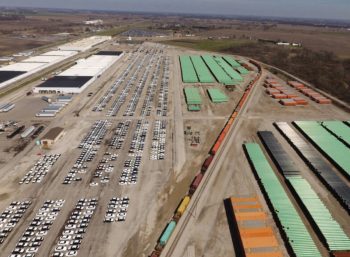
Emily Traiforos: CREATE’s 75th Street Corridor Improvement Project
Chicago, Illinois
The 75th Street Corridor Improvement Project (CIP) is the biggest project of the Chicago Region Environmental and Transportation Efficiency (CREATE) program, a massive, $4.6 billion undertaking to streamline freight and passenger operations in the nation’s largest rail hub. CREATE—launched in 2003 as a public-private partnership between freight and passenger railroads, Illinois DOT, Chicago DOT, and Cook County—will complete 70 freight and passenger rail and highway infrastructure projects to improve rail and traffic flow through Chicago.
The 75th Street CIP, in particular, will eliminate the biggest chokepoint in the Chicago Terminal, where 30 Metra and 90 freight trains cross each other’s paths every day at Belt Junction. While planning for the project began in 2010, CIP was awarded a $132 million federal INFRA Grant in 2018. The grant, matched with $116 million from the Association of American Railroads (representing all Class I railroads) and $78 million from Cook County, among other contributors, is enabling the current construction of a flyover at CSX’s Forest Hill junction.
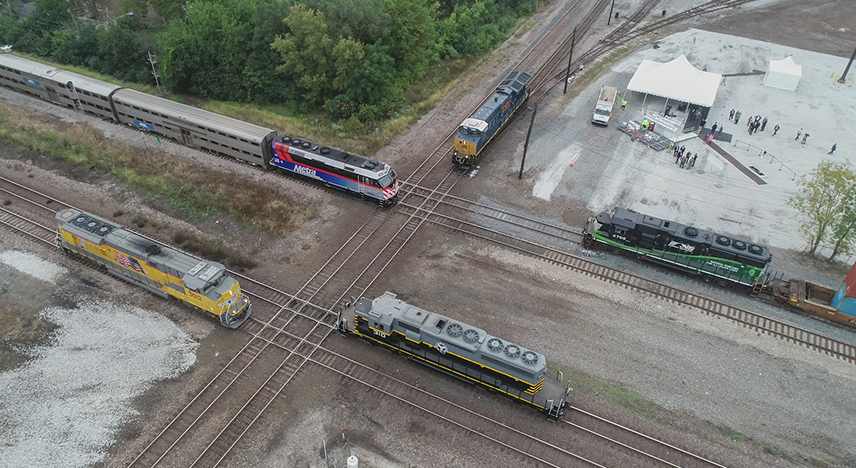
Russ McGurk: The Long Bridge
Washington, D.C. and Arlington, Virginia
Among the many infrastructure projects that freight railroads are spearheading all across the continent, one close to the GoRail home office is the Long Bridge project to fix one of the major rail chokepoints in the east with a second rail bridge across the Potomac River between Virginia and Washington, D.C.
The existing 1904-vintage two-track structure operates at or near capacity and cannot keep pace with the 21st century demand of both freight and passenger operations in the region. Moving the Long Bridge forward has been a collective effort of D.C., Virginia, and the federal government, along with Amtrak, Virginia Railway Express and the private sector, especially CSX. The $1.9 billion bridge project is the centerpiece of a much larger rail initiative in Virginia where the state is working with a broad group of public and private stakeholders including CSX and Norfolk Southern to enhance the safety and efficiency of passenger and freight rail service.
As the project moves forward, it will be an opportunity for Washington policymakers and all in D.C. and throughout the region to see first-hand how rail infrastructure improvements both support the economy and advance other public policy goals like cutting the emissions that contribute to climate change and reducing highway congestion.
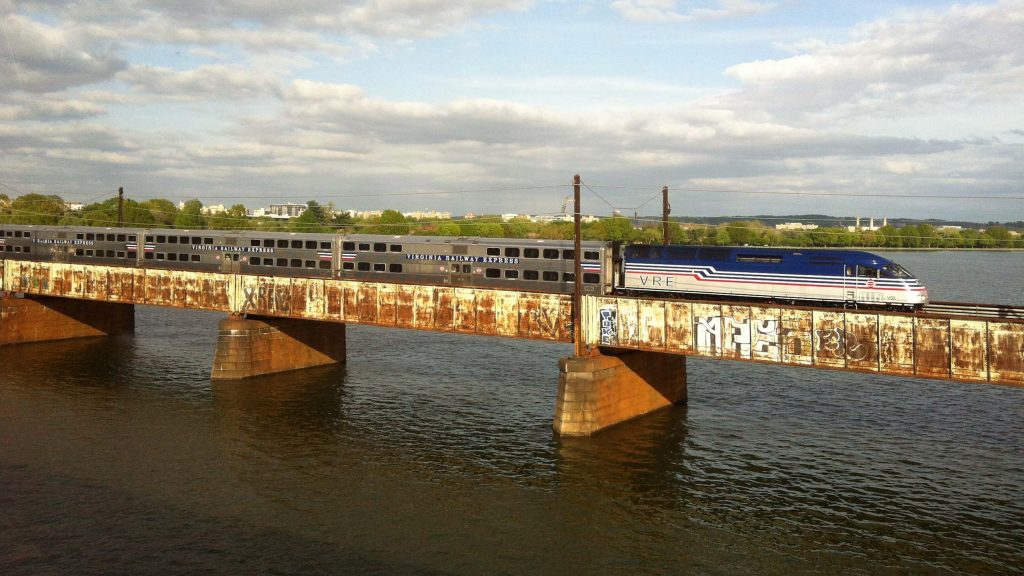
Brett Sebastian: I-49 Logistics Center
Kansas City, Missouri
A bit of an under-the-radar project, the I-49 Logistics Center started in 2007 and involved the redevelopment of a property that was originally a civil airport and served as a military base from 1941 to 1999. Adjacent to the Kansas City Southern (KCS) International Freight Gateway (IFG), this facility provides unparalleled access to the deep-water port of Lazaro Cardenas in Mexico, as well as the Panama Canal and gulf coast seaports.
Kansas City is already the largest rail center in the U.S. by tonnage with five of the Class I rail lines (BNSF, CP, KCS, NS and UP) intersecting in the region. Changes to the global supply chain made 2020 a record year for industrial development in the Kansas City Area. These continuing trends along with the implementation of the U.S.-Mexico-Canada Agreement place Kansas City on the forefront of economic growth trends. New development at the I-49 Logistics Center and the direct connections to Mexico have this intermodal facility poised for more growth.
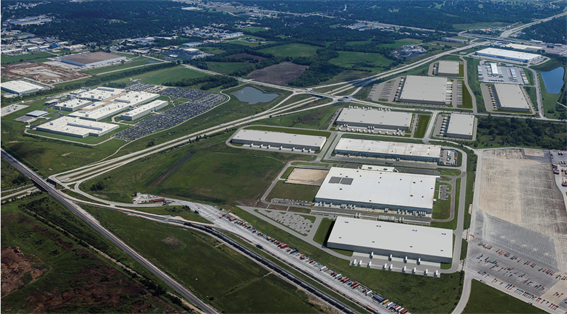
Betsy Cantwell: Genesee Arch Bridge
Livingston County, New York
The Genesee Arch Bridge, soaring across the Genesee River gorge at Letchworth State Park, is a 963-foot-long steel arch railroad bridge on Norfolk Southern’s Southern Tier Line. It replaced the 19th century Portageville Bridge, which had become a bottleneck due to speed and weight restrictions.
Dedicated in 2018 after two years of construction, the $75 million bridge project was completed through a public-private partnership between NS, the New York State Department of Transportation, the New York State Office of Parks, Recreation and Historic Preservation; the Finger Lakes Regional Economic Development Council; and the Federal Highway Administration. The bridge, designed to minimize the railroad’s environmental impact and complement the beauty of the “Grand Canyon of the East,” will fuel development and “support the economy of the Southern Tier for years to come.”
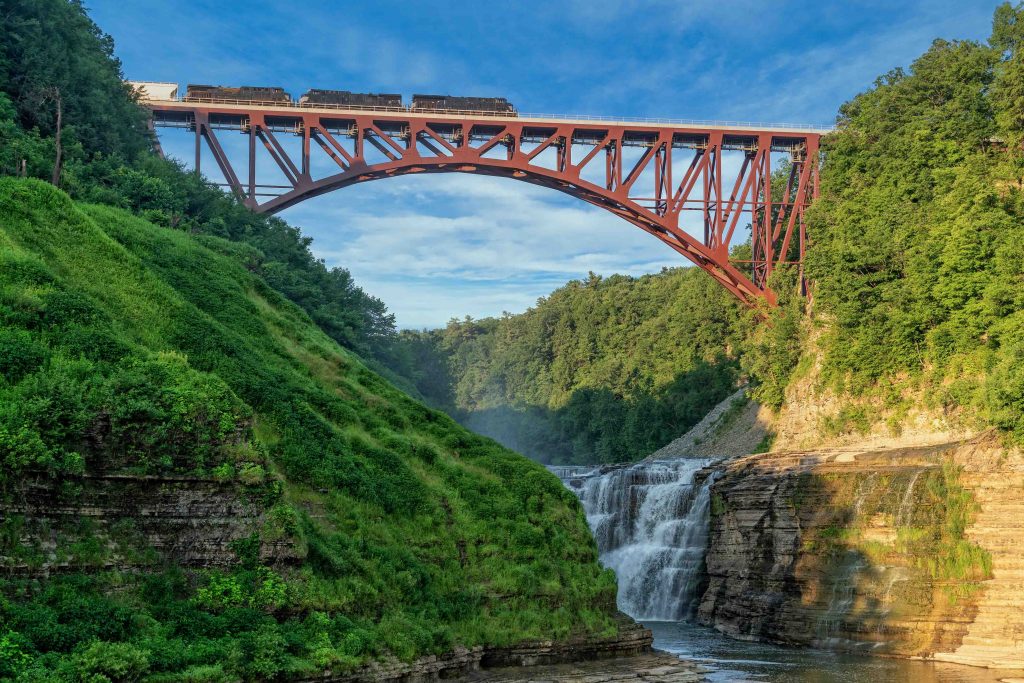
Curtis Sloan: The Alameda Corridor
Los Angeles, California
One of the classic examples of public-private rail partnerships, the Alameda Corridor runs from the ports of Long Beach and Los Angeles 20 miles north to downtown Los Angeles, mostly along Alameda Street. The Ports of L.A. and Long Beach are the busiest in the U.S. and are served by both BNSF and Union Pacific as well as the Pacific Harbor Line. While the idea of developing a single, consolidated rail corridor dates back to 1984, construction did not start on the corridor until 1997 and operations began in April 2002.
The centerpiece of the project is a 33-foot-deep open trench that is 50 feet wide and carries double-track freight trains. This separates freight trains from the nearly 200 at-grade crossings that had intersected the four single-track routes into the ports prior to the corridor’s construction. Now, 28 trains a day on average, traveling at up to 40 miles an hour, pass through the Corridor. This has helped significantly lower congestion along the previous rail routes without creating new congestion along the new route because of minimized highway-rail crossings.
Not only has the project made both train and highway travel more efficient in the LA Basin, the Corridor has had significant environmental benefits. It decreases train travel time, decreases auto idling by reducing crossings, and encourages more freight to move by rail. It likewise was constructed with more efficient tracks that impose a lower load on a locomotive’s engine, and has, since its opening, prevented the emission of over 11,000 tons of greenhouse gases, reducing idling by cars and trucks by 54%. It has been so successful that a second “Alameda Corridor – East” is currently under construction to extend the benefits of the project further inland.



